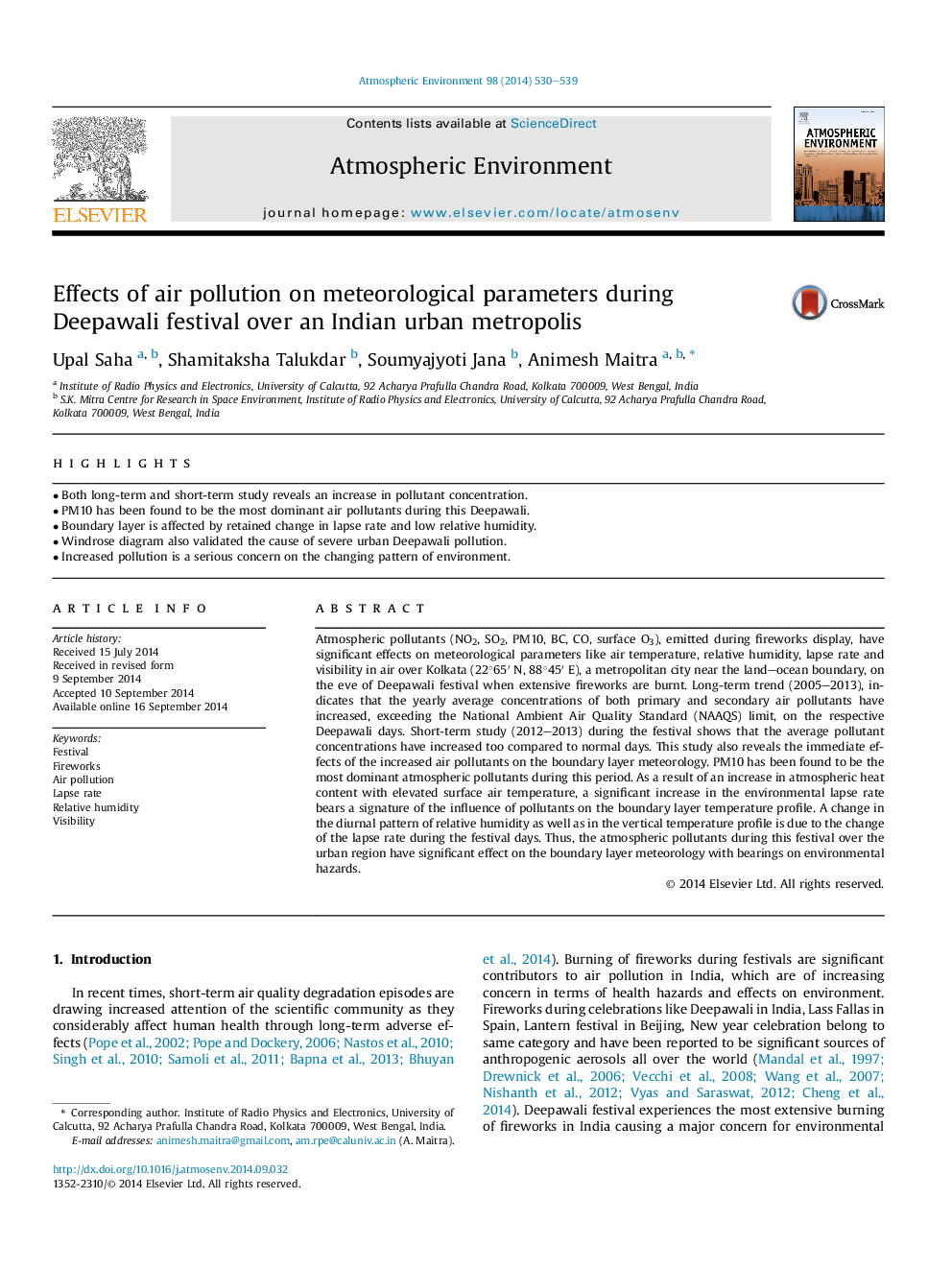| Article ID | Journal | Published Year | Pages | File Type |
|---|---|---|---|---|
| 6339022 | Atmospheric Environment | 2014 | 10 Pages |
Abstract
Atmospheric pollutants (NO2, SO2, PM10, BC, CO, surface O3), emitted during fireworks display, have significant effects on meteorological parameters like air temperature, relative humidity, lapse rate and visibility in air over Kolkata (22°65ⲠN, 88°45ⲠE), a metropolitan city near the land-ocean boundary, on the eve of Deepawali festival when extensive fireworks are burnt. Long-term trend (2005-2013), indicates that the yearly average concentrations of both primary and secondary air pollutants have increased, exceeding the National Ambient Air Quality Standard (NAAQS) limit, on the respective Deepawali days. Short-term study (2012-2013) during the festival shows that the average pollutant concentrations have increased too compared to normal days. This study also reveals the immediate effects of the increased air pollutants on the boundary layer meteorology. PM10 has been found to be the most dominant atmospheric pollutants during this period. As a result of an increase in atmospheric heat content with elevated surface air temperature, a significant increase in the environmental lapse rate bears a signature of the influence of pollutants on the boundary layer temperature profile. A change in the diurnal pattern of relative humidity as well as in the vertical temperature profile is due to the change of the lapse rate during the festival days. Thus, the atmospheric pollutants during this festival over the urban region have significant effect on the boundary layer meteorology with bearings on environmental hazards.
Related Topics
Physical Sciences and Engineering
Earth and Planetary Sciences
Atmospheric Science
Authors
Upal Saha, Shamitaksha Talukdar, Soumyajyoti Jana, Animesh Maitra,
